Evergreen Skateparks: Bringing skaters, artists and communities together. With owners, Billy & Catherine Coulon
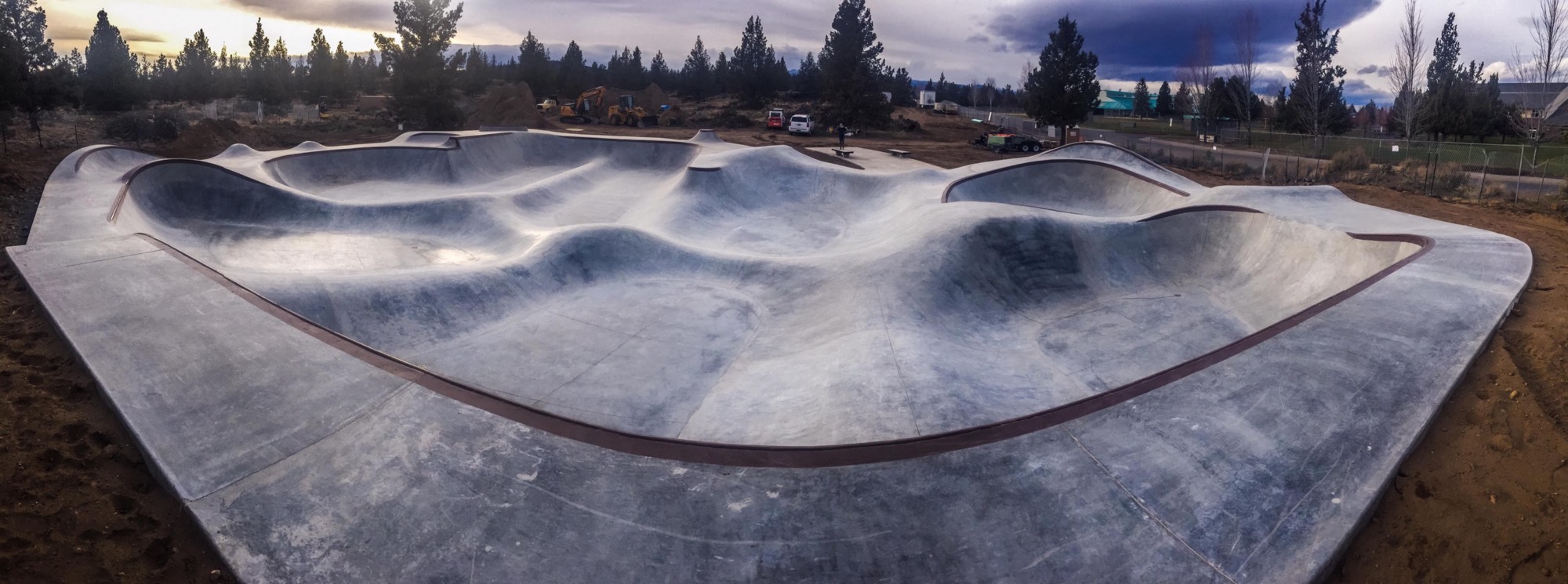
From designing, to building, to completing the overall look, there is a true art to the development of a skatepark. In addition, once the park is complete, you then enable the art of skateboarding — giving kids and all skaters alike a place to explore their creativity, while making connections within their community and learning the definition hard work.
Meet Billy and Catherine Coudon, the owners of Portland, OR based — Evergreen Skateparks. For the past six years, avid skaters, Billy and Catherine have seen their vision through, and have created skateparks all across the globe.
Their mission is to build fun, innovative skateparks that people of all abilities and experience can enjoy. Designs incorporate transition and street inspired sculptural obstacles. Evergreen parks are created from start to finish, with an ultimate goal to to make the most optimal skateparks for everyone to learn, progress, and have fun.
A signature element to their design is an appreciation for aesthetics. Although the most important piece is the skateable functionality, they strive to have their parks be pleasing to the eye and incorporate the natural elements and surroundings.
Here, Billy and Catherine take us inside their process:
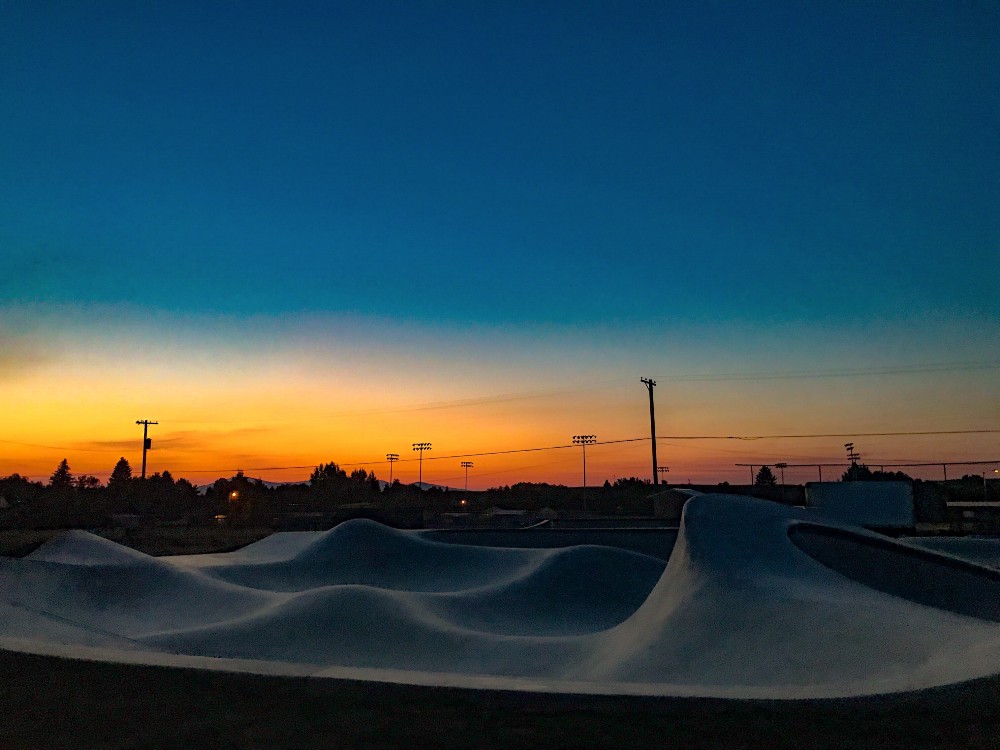
How Evergreen Skateparks Came To Be:
(Catherine) Evergreen Skateparks is owned and was founded by Billy and I. We’ve been together for 17 years now- since I was 19 and Billy was 21. In 2003, we were living in Hawaii while I finished college at the University of Hawaii. Billy had been a skater since he was a kid and I had picked up skating in 2002. One evening one of our roommates at the time put on a documentary about skatepark building- The Northwest documentary. For those who are unfamiliar, it’s a documentary about the concrete skatepark building movement that was taking place in the late 90’s/early 2000’s in Oregon and Washington by Dreamland and Grindline Skateparks. Billy was mesmerized- I said, “There, that’s your job. That’s what you should be doing.” In 2004 we moved to Portland, Oregon and by 2005 Billy had linked up with Geth Noble, who owned Airspeed Skateparks, and started volunteering on the Toledo, Oregon Skatepark on the Oregon coast in hopes that he could secure a spot on the crew. In 2006 he started working with Dreamland Skateparks and he learned a lot working there, but he didn’t have much seniority and the work wasn’t very steady, which was hard to deal with when you have a mortgage and are trying to be productive adult. Come 2009, the work dried up completely and Billy knew he had to figure something out. All he wanted to do was build skateparks and continue to progress at his trade. We lived about 45 minutes from Windells Snowboard/Skateboard Camp on Mt.Hood and Billy had helped on some small concrete pours here and there at the camp. We always knew eventually we would like to start our own skatepark building company and Billy saw the potential at Windells to cover the place in skate-able concrete that he could use as a physical resume and platform to start getting our own jobs. After a meeting with Tim Windell (the owner) Billy explained to him his plan of wanting to start our own company and Tim was fully supportive. Billy spent hours working on systems to hone his skills and keep the momentum of the project going. He worked on the skatepark at Windells for almost 2 years and it was a real success- people loved it and they slowly started inquiring about other projects. In 2011, we were hired to build phase 2 of the Carbondale, Colorado skatepark- it was our first Municipal job- and that is when we knew it was time to get fully legit- contractors license, bonded, insurance, etc. That is when Evergreen Skateparks was official.
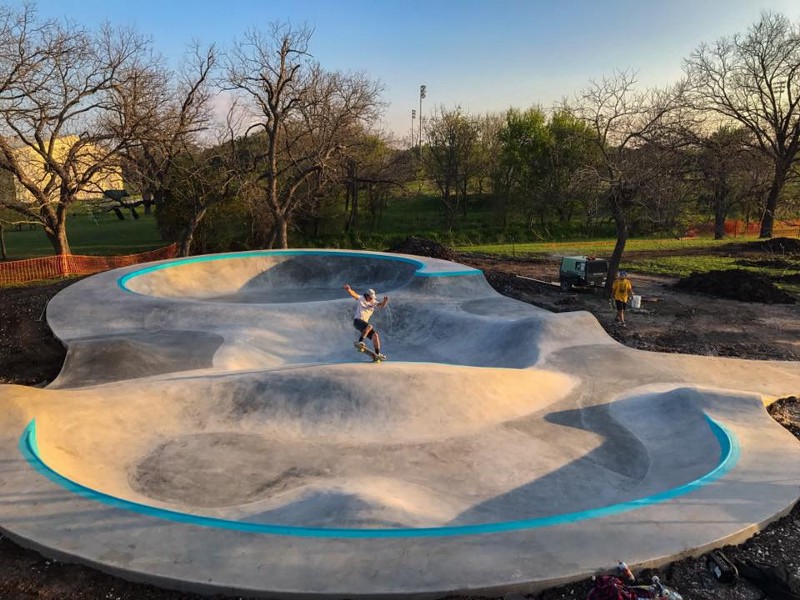
Our First Skatepark:
(Billy) When we completed our very first municipal job, Phase 2 of the Carbondale, it was an absolutely amazing moment. The feeling of accomplishment was almost addicting. I remember it very clearly. It was one of the best feelings I’ve ever had in my life and I immediately wanted more of that feeling. To be so responsible and be in a position of managing a group of people that was capable of taking on more- bigger and better projects and working on our systems and our craft to build this sustainable life. We didn’t even care if we made money, we just wanted to complete it and have it turn out good and do more projects.
The Process of Connecting With A Community:
(Catherine) It’s all over the board. Some projects take many, many years to come to fruition and some have a large donor or get funding right away and can be completed quite quickly if there’s not too much red tape in the way. Generally though, either we write proposals for projects or bid on them. With proposals they usually choose the best proposal or company for the job and with the bids they usually just go with the lowest (cheapest) qualified bidder. Sometimes too we just get hired right out of the gate and are able to avoid the competitive bidding/proposal process. A lot of the communities we work with though are in the very preliminary stages, when the skatepark is just a concept or a goal, and it can take many years for them to get funding, but over those years we build a relationship with them, establish trust and do our best to educate them about quality skateparks and skatepark design.
The Design Phase:
(Billy) The design process is generally a collaborative effort. One of the major things that separates our company from other companies is that the people who create the Evergreen conceptual drawings are the same people who work on site so the intent of the design is never lost during construction. As far as the way we build stuff, we are continually trying to work on our systems and organization to become more efficient. We are very concerned with quality- we want to come back and visit the park and skate, not fix things.
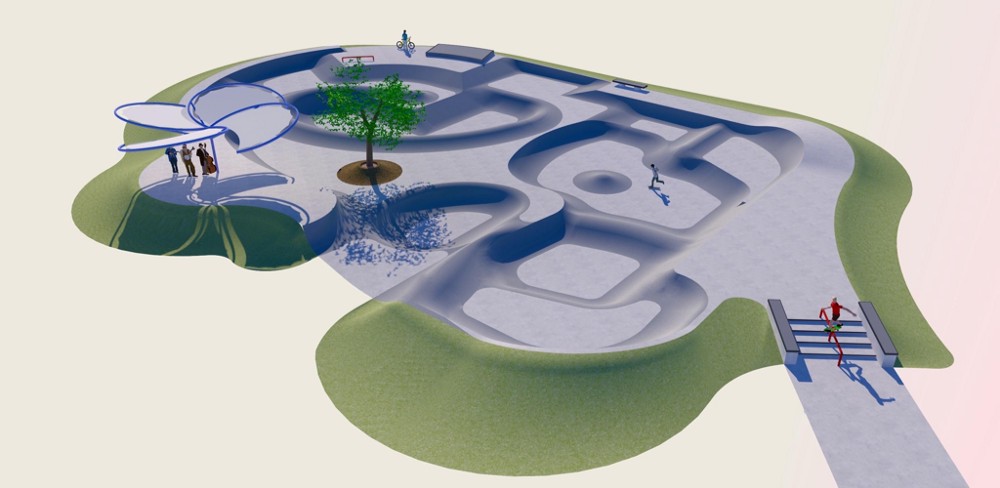
The Funding Process:
(Catherine) There really is no average cost for a park, but when we do design/build projects we always try to build the most we can for whatever budget we’re given. The funding varies a lot just like the approval and fundraising process, but funding generally comes from community fundraising, private donors, grant money and municipalities.
Creating Skateparks = Creating Art:
(Billy) 100%, I’m trying to create art in every park. I approach skateparks as a large, sculptural art project and I always will. It’s form and function and if it looks beautiful it will ride beautiful. I want our parks to take on forms reminiscent of a beautiful woman.
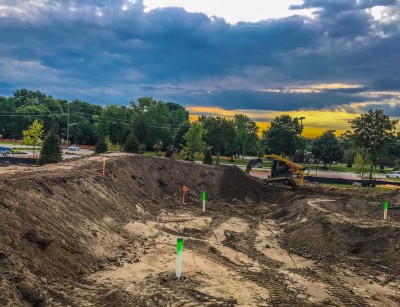
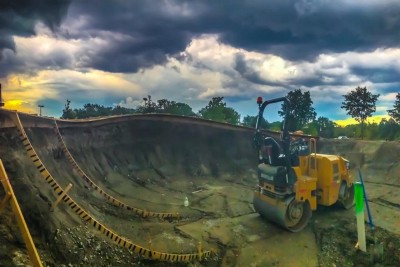
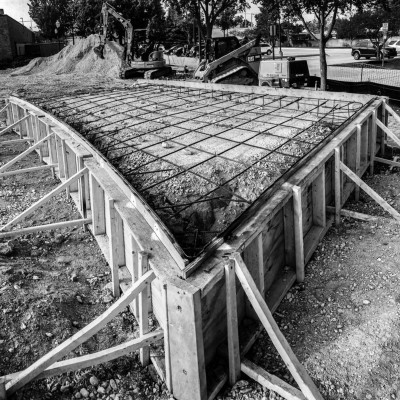
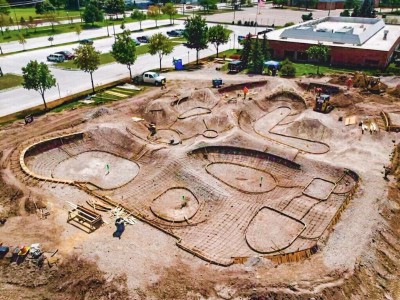
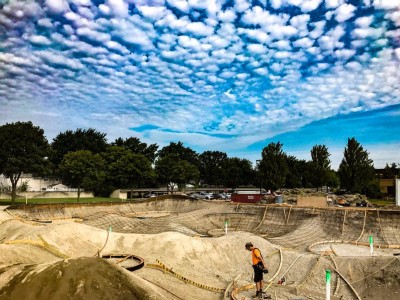

Partnering With The Music Community:
(Billy) Similar to music- we have to unite in order to create so there is a lot of deep mind-melding like in a band. In music and skatepark building, we are all extremely passionate about what we are doing because we are creating something bigger. We do the skateparks from start to finish so there are a lot of different trades and skills that people possess. In skatepark building people have their primary trades- plumbing, heavy equipment, form setting, concrete finishing to welding- just like the way people play different instruments and then we all come together for the whole. We could not be happier about having the opportunity to work with Jeff Ament of Pearl Jam- he designs a lot of the stuff we build at the parks and he has a great eye and he trusts us, which allows us to do our best work.
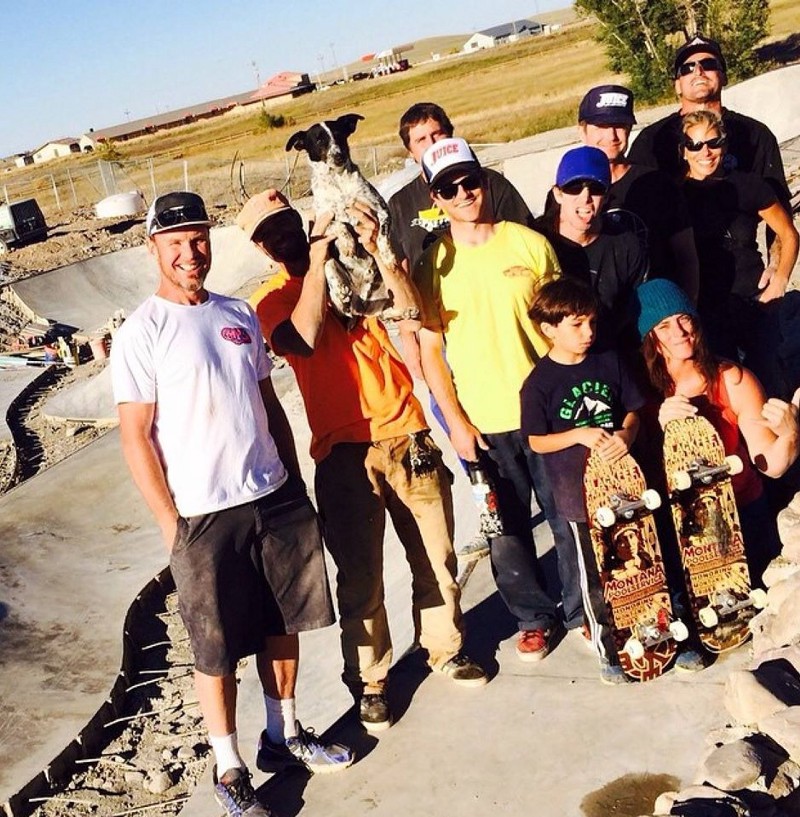
Most Memorable Moment:
(Catherine) The most memorable and meaningful project we have been in a part of is the Thunder Park on the Blackfeet Reservation in Browning, Montana. This was the first park that Jeff Ament hired us to do. He had the idea for us to replicate the California Big O Bowl from the 70’s, but other than that he gave us total creative freedom. Finally we got the chance to build the lunar landscape style park we had been dreaming and talking about building. We were very pleased with finished product, but what really made this so incredible was when we came back to the park to skate six months later and saw how the Blackfeet kids had taken to the park. Prior to the completion of Thunder Park I don’t think any of the kids skated or knew anything about skateboarding culture or media. But because of the user friendly nature of the park and the way it was designed for speed and riding, the kids who came to the park on a regular basis were progressing tremendously and they were just really good at carving and riding their boards in general. We could tell that our theories about this type of design style were coming true. Being able to give these kids a place to form their own community and be active and have fun was rewarding beyond words. We look forward to going back every year and seeing their progression at skateboarding.
It’s hard to even put into words what an incredible project this was from start to finish in regards to the location, the crew we had working, the quality of the skatepark design and aesthetics, the opportunity to get to work with Jeff and the impact it’s had on the community. I don’t know how many people get to feel that kind of satisfaction in their work but we are so grateful and humbled by our experience building the Thunder Park for the Blackfeet Nation.
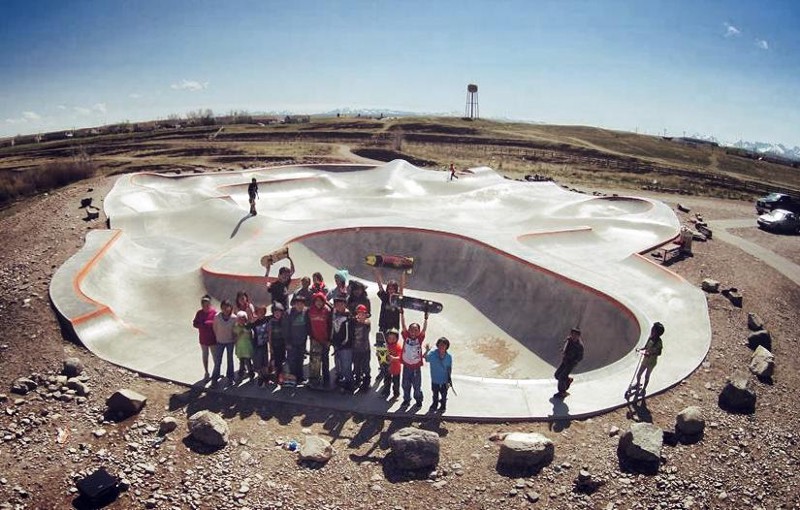
What’s On Tap:
(Catherine)Currently we are working on one of our largest design/build projects yet in Sterling Heights, Michigan- a suburb of Detroit which should be finished by the end of fall and also a park in Watertown, South Dakota. After that we have a project in Fort Morgan, Colorado and a long awaited skatepark in Taylor, Texas.
~ Billy & Catherine Coulon
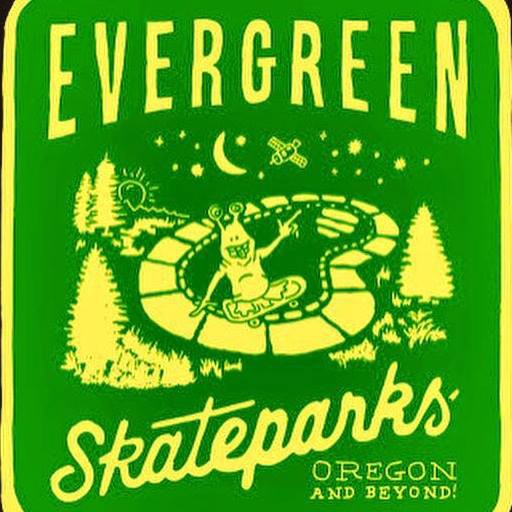
For more information visit: Evergreenskateparks.com
All photos provided by Evergreen Skateparks.
If you enjoyed, please recommend by clicking the heart below
In collaboration with/produced by Jeff Gorra
Follow Artist Waves on: Facebook, Twitter & Medium
~ follow Jeff Gorra | twitter @JeffGorra |JeffGorra@ArtistWaves.com



